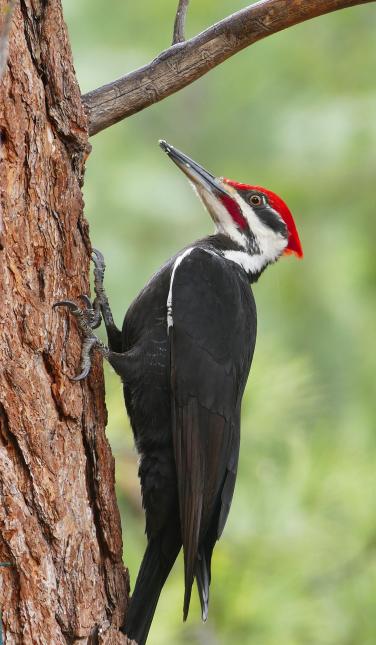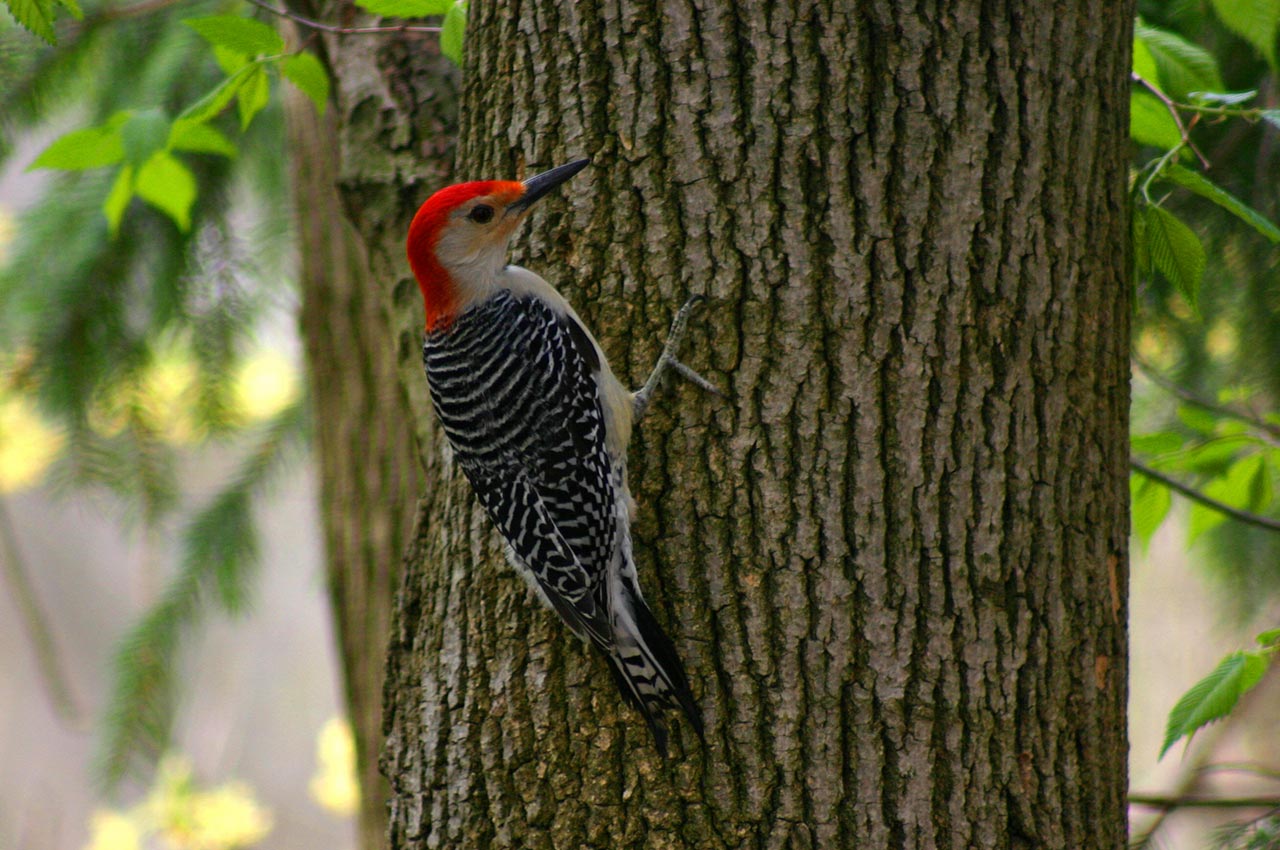Woodpeckers in Florida: Recognition Tips and Environment Preferences
Woodpeckers in Florida: Recognition Tips and Environment Preferences
Blog Article
Woodpeckers Unleashed: Exploring the Wonders of These Competent Tree Climbers
Woodpeckers, with their unique markings and balanced drumming echoing via wooded locations, hold an one-of-a-kind area in the avian globe - Woodpeckers in Florida. As we dig into the elaborate information of woodpeckers' nesting behaviors, feeding strategies, and the ongoing preservation initiatives to secure these impressive birds, a much deeper admiration for their area in nature unravels.
Composition and Adaptations
When checking out the composition and adaptations of woodpeckers, one can observe impressive attributes that enable these birds to thrive in their specialized ecological particular niche. Woodpeckers are geared up with a collection of distinct physiological qualities that help them in their woodpecking actions. Among one of the most famous features is their solid, chisel-like beak, which is specialized for boring right into timber to discover insects or create nesting cavities. This beak is sustained by solid neck muscle mass and a very developed skull framework that serves as a shock absorber, allowing woodpeckers to repeatedly peck at trees without causing brain injury. Furthermore, woodpeckers have zygodactyl feet, with 2 toes dealing with ahead and 2 facing backwards, offering a firm grip on tree trunks while they look for food or drum for interaction.
Furthermore, woodpeckers have a special tongue framework that is long, barbed, and sticky, allowing them to remove pests from gaps in timber. This specific adaptation enables woodpeckers to manipulate a food source that is inaccessible to many other bird types. Overall, the composition and adjustments of woodpeckers showcase the exceptional evolutionary solutions that have allowed these birds to prosper in their arboreal environment.
Drumming Behavior
Having actually explored the makeup and adaptations of woodpeckers, the focus currently moves to recognizing their drumming actions, an unique facet of their interaction and territorial displays. Drumming is an essential form of communication amongst woodpeckers, serving numerous objectives such as establishing areas, drawing in companions, and signaling alarm system. Each woodpecker species has a special drumming pattern that aids individuals identify participants of their very own types and differentiate them from competitors or predators.
Woodpeckers generate drumming sounds by rapidly pecking on powerful surfaces such as dead trees, energy posts, or also steel items, developing a series of rhythmic beats. The intensity and speed of drumming can vary based on the objective; for instance, a fast drumming sequence might represent hostility in the direction of intruders, while a slower and softer drumming pattern can suggest courtship (Woodpeckers in Florida). In addition, woodpeckers may change the frequency and period of their drumming to share particular messages effectively
Nesting Routines
Discovering the nesting behaviors of woodpeckers discloses remarkable understandings right into their reproductive habits and habitat choices. Woodpeckers are understood for their distinct nesting choices, frequently excavating cavities in trees to produce protected areas for raising their young. These tooth cavities serve not just as a nesting site but additionally as a safe and secure haven from killers and severe weather.
Woodpeckers show a high degree of integrity to their nesting sites, frequently going back to the same location every year. This behavior highlights the importance of appropriate habitat schedule for their reproductive success. The option of a nesting site is essential for woodpeckers, with aspects such as tree types, elevation, and decay phase playing substantial functions in their decision-making process.
Surprisingly, some woodpecker species are known to dig deep into several tooth cavities within their area, giving themselves with alternative nesting choices. This strategy might work as a type of insurance policy against prospective hazards or disruptions to their primary nesting site.

Feeding Methods
Woodpeckers employ a range of specialized feeding methods to acquire their primary food sources. Among one of the most unique feeding actions of woodpeckers is drumming, which entails rapid pecking on trees to uncover bugs below the bark. This drumming not just helps them locate target however also serves as a means of interaction with various other woodpeckers. Woodpeckers have solid, chisel-like beaks that permit them to pierce into wood effortlessly. As soon as a hole is produced, they utilize look at here their lengthy, barbed tongues to draw out pests such as ants, beetles, larvae, and crawlers. These tongues are coated with sticky saliva that helps catch the target. Woodpeckers are likewise known to excavate dental caries in trees to accessibility concealed insect larvae or sap. Some species, like the acorn woodpecker, shop nuts in specially produced holes called granaries. This strategic storing of food assists them survive during food deficiency periods. Woodpeckers are genuinely remarkable in their feeding methods, showcasing adaptability and knowledge in obtaining their nutrition.
Preservation Efforts
Among the complex feeding techniques displayed by woodpeckers, the conservation initiatives aimed at securing these fascinating birds play a vital function in protecting their habitats and populaces. Woodpeckers deal with numerous risks to their survival, consisting of habitat loss due to logging, climate modification modifying their ecological communities, and accidents with manufactured structures such as buildings and cars - Woodpeckers in Florida. Conservationists are proactively working to resolve these challenges and make sure the long-term wellness of woodpecker varieties

Education and public awareness projects are additionally vital elements of woodpecker preservation efforts. By Check Out Your URL increasing awareness concerning the value of these birds in keeping healthy and balanced woodland environments, conservationists can gather assistance for environment preservation efforts and promote accountable land management techniques. With collective initiatives in between researchers, policymakers, and neighborhood areas, we can function with each other to protect a future where woodpeckers thrive in their all-natural environments.
Conclusion

Report this page